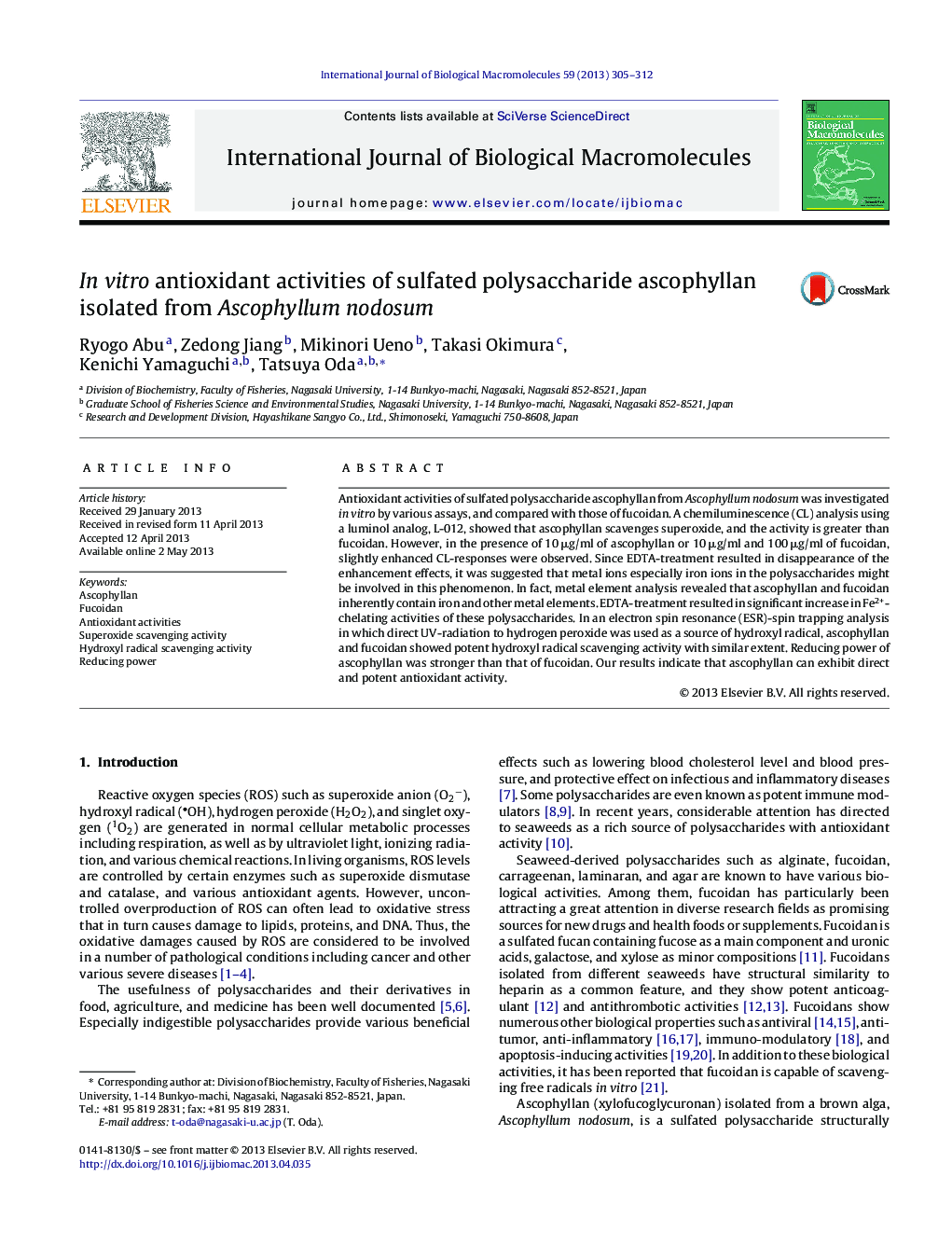| Article ID | Journal | Published Year | Pages | File Type |
|---|---|---|---|---|
| 8333648 | International Journal of Biological Macromolecules | 2013 | 8 Pages |
Abstract
Antioxidant activities of sulfated polysaccharide ascophyllan from Ascophyllum nodosum was investigated in vitro by various assays, and compared with those of fucoidan. A chemiluminescence (CL) analysis using a luminol analog, L-012, showed that ascophyllan scavenges superoxide, and the activity is greater than fucoidan. However, in the presence of 10 μg/ml of ascophyllan or 10 μg/ml and 100 μg/ml of fucoidan, slightly enhanced CL-responses were observed. Since EDTA-treatment resulted in disappearance of the enhancement effects, it was suggested that metal ions especially iron ions in the polysaccharides might be involved in this phenomenon. In fact, metal element analysis revealed that ascophyllan and fucoidan inherently contain iron and other metal elements. EDTA-treatment resulted in significant increase in Fe2+-chelating activities of these polysaccharides. In an electron spin resonance (ESR)-spin trapping analysis in which direct UV-radiation to hydrogen peroxide was used as a source of hydroxyl radical, ascophyllan and fucoidan showed potent hydroxyl radical scavenging activity with similar extent. Reducing power of ascophyllan was stronger than that of fucoidan. Our results indicate that ascophyllan can exhibit direct and potent antioxidant activity.
Keywords
Related Topics
Life Sciences
Biochemistry, Genetics and Molecular Biology
Biochemistry
Authors
Ryogo Abu, Zedong Jiang, Mikinori Ueno, Takasi Okimura, Kenichi Yamaguchi, Tatsuya Oda,
